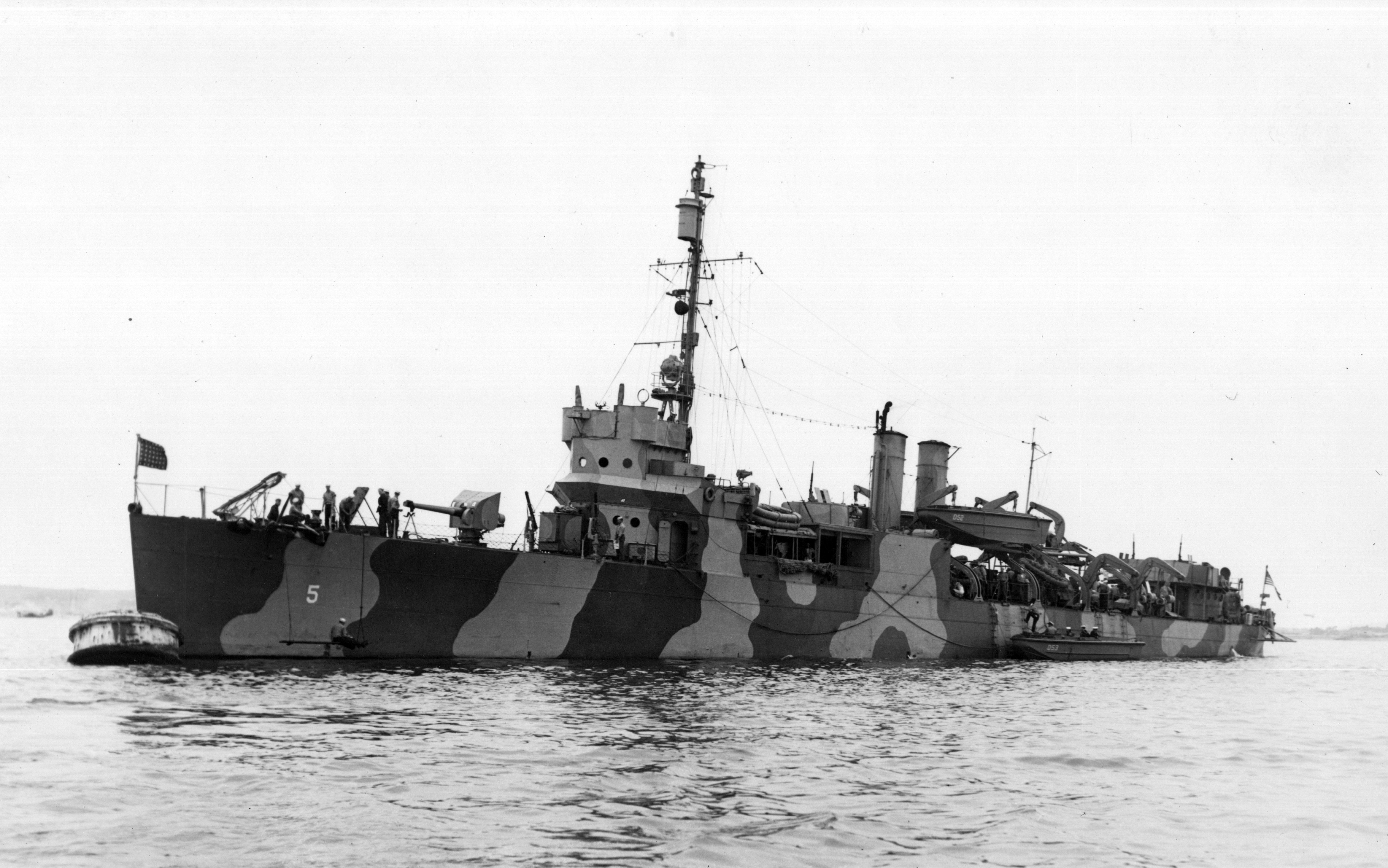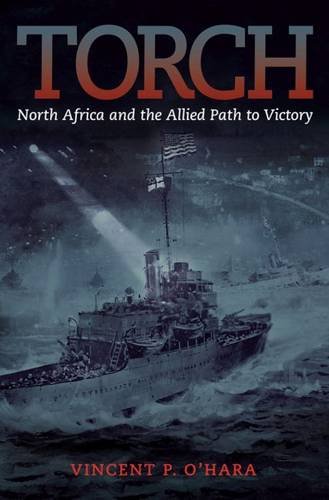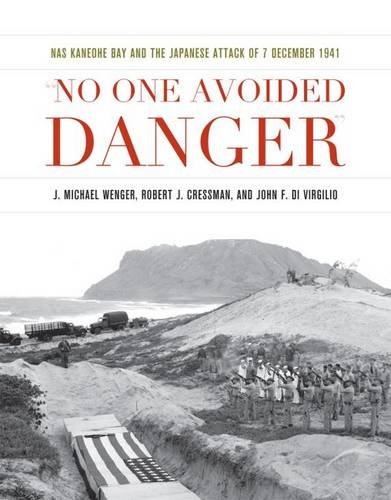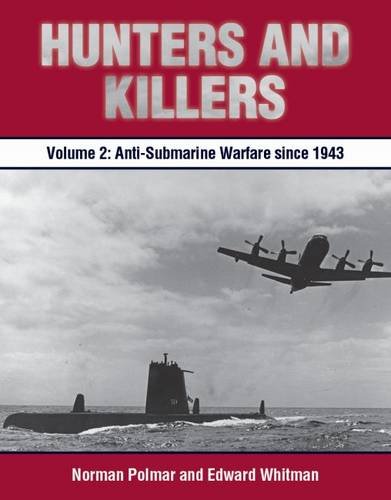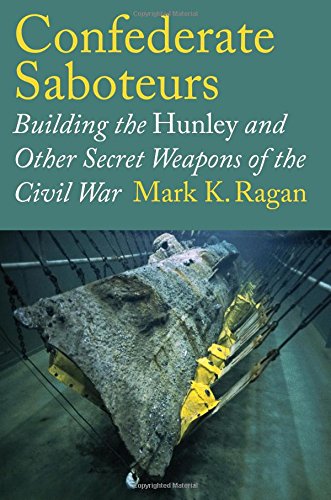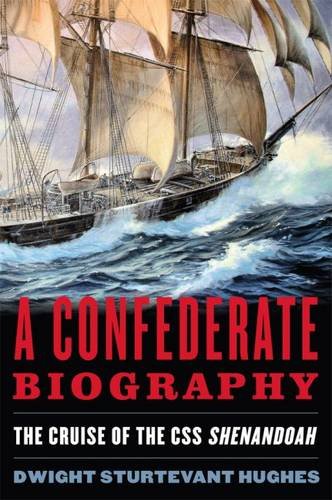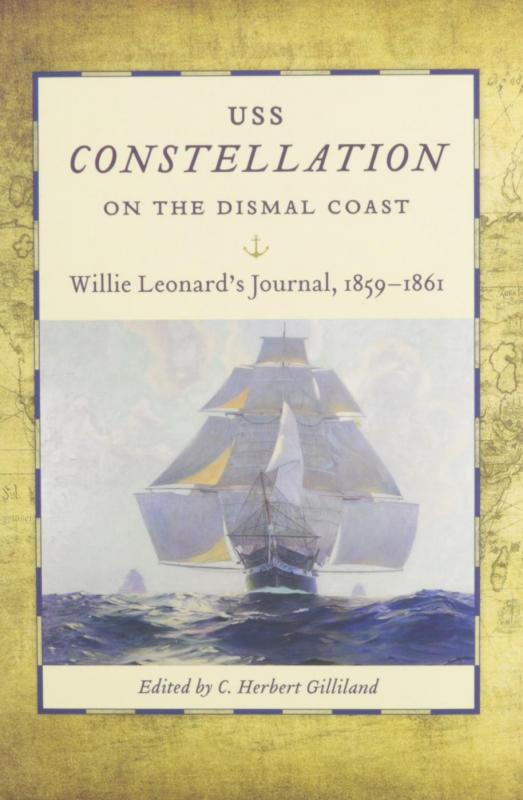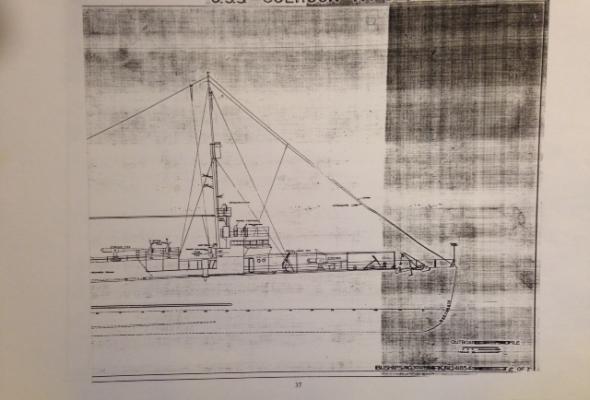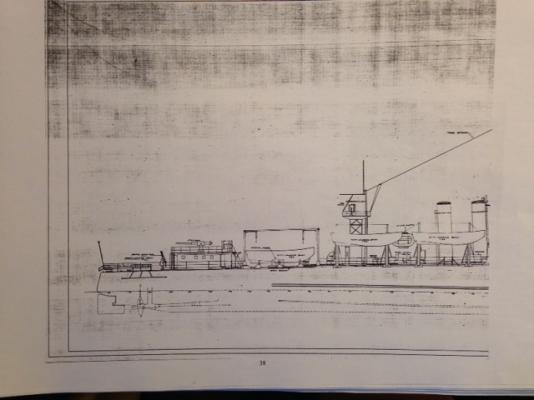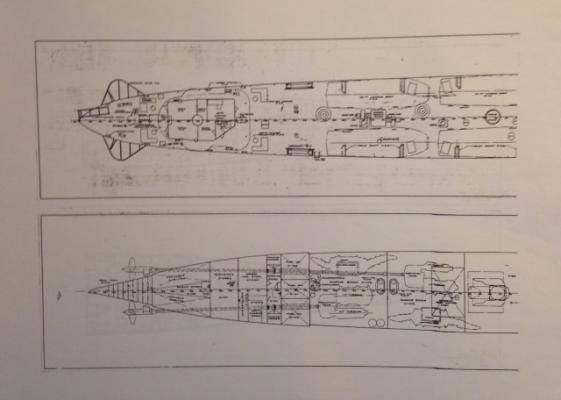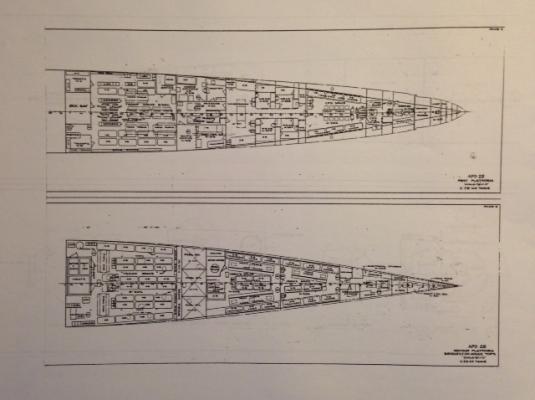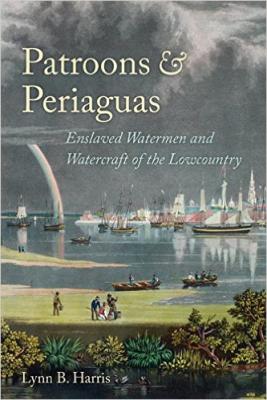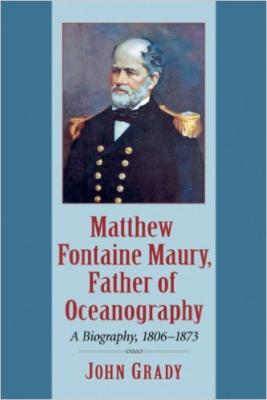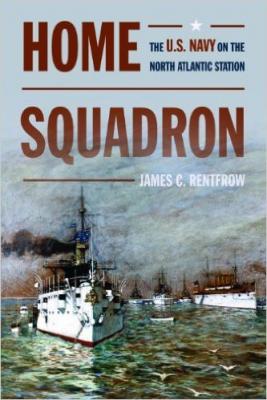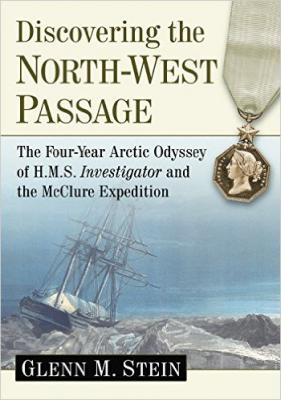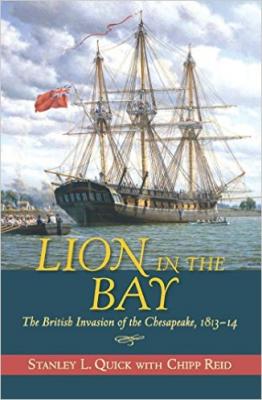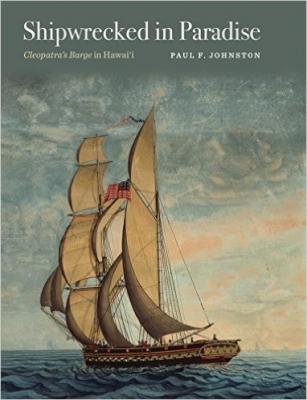-
Posts
97 -
Joined
-
Last visited
Content Type
Profiles
Forums
Gallery
Events
Everything posted by prmitch
-
Mad for Glory: A Heart of Darkness in the War of 1812 By Robert Booth Thomaston, Maine: Tilbury House Publishers, 2015 6-1/4” x 9-1/4”, hardcover, 244 pages Illustrations, map, notes, bibliography, index. $24.95 ISBN: 9780884483571 Mad for Glory: A Heart of Darkness in the War of 1812, by Robert Booth, is an informative account of the lives of two historical figures during the War of 1812 and illustrates how delusions of grandeur ultimately led to catastrophic consequences. Captain David Porter is the main character, a deluded yet incredibly ambitious officer in the United States Navy. United States Consul General Joel Roberts Poinsett is a smart and worldly man charged with inciting revolution in South America. They serve as the main characters in a wild and extraordinary journey of two men's lives in the war-torn world of the early nineteenth century. Fantastical, but thoroughly researched for its quality in interpreting the life stories of Porter and Poinsett, it is heavily based on Porter’s journal entries which he eventually published in 1815 as Journal of a Cruise Made to the Pacific Ocean. Poinsett’s own personal accounts are utilized as primary source material, along with a plethora of other firsthand stories and secondary sources. Descriptive in regard to the lives of both men on a larger global conflict scale, the narrative is indicative of the amount of research that Booth undertook to write this book. Booth articulates very well the history of the War of 1812 between the United States and Britain with events leading up to, during, and after the conflict. Though primarily based on accounts of Porter’s and Poinsett’s experience, the book also touches on other broader scale conflicts such as the revolutionary movements in Chile that Poinsett helped but failed to establish. Other major historical events are also explored and woven seamlessly into the focused story of Captain Porter: a man who defied his own government’s orders to pursue an ill-constructed fantasy of fame and fortune. Booth does well to show the depth of character in Captain Porter and his obsession with the Pacific Ocean. This self-serving fantasy drove him into such frivolous madness, leading him and his men into an outlandish and suicidal pursuit of his own desires. This is perhaps the greatest strength of the book. It takes an in-depth and analytical perspective of Porter’s mindset not only as a naval officer, but as an intense, emotional, and unpredictable individual. Porter’s personal journal entries and the author’s interpretation of them do well to explain the anger, frustration, and egotistical tendencies of the captain. Booth is very expressive with his writing. He is able to use cohesive sentences to break down and explain the mental rational of Porter, so much that it makes the narrative engaging and entices the casual reader to continue reading on sentence by sentence till the end of the book. The perspectives of other characters in this book are also equally described, particularly with the sailors on Essex under the command of Porter. Reviewing their accounts gives the reader a sense of physically being there as the sailors’ experiences are explained. This collection of historical narratives reads like adventure story. Well-written and researched, Mad for Glory: A Heart of Darkness in the War of 1812 by Robert Booth is a wonderful book for anyone to enjoy. The title of the book is somewhat is fitting, as it explores the dark corners of the human desires, obsession and their consequences. Paul Gates East Carolina University
-
Privateering: Patriots & Profits in the War of 1812 By Faye M. Kert Baltimore: Johns Hopkins University Press, 2015 6-1/4” x 9-1/4”, hardcover, viii + 215 pages Illustrations, appendix, notes, essay on sources, index. $55.00 ISBN: 9781421417479 Trimming Yankee Sails (2005) and Prize and Prejudice (1997) are two previous works by Faye Kert on the subject of privateering. A third fascinating work by Kert appeared in 2015 as a treatise on certain aspects behind privateering (both American and British) during the War of 1812. The emphasis of Privateering: Patriots & Profits in the War of 1812 is clearly captured in the title. Kert uses this slender work to discuss the economic ramifications of privateering while also shedding light on the perspective of the privateers themselves. Supplemental emphases Kert places in this work are anecdotal stories discovered via her astounding research, in addition to the motivations for and against privateering as a state-sponsored institution. The introduction of Privateering fully encompasses the book in its entirety. Not only does Kert briefly (in only eight pages) and expertly paint the picture of anti-war supporters, but she also lays a framework for contextualizing privateers and their mentality. For Kert, the final decision many privateers made during their raids was on the basis of, as she puts it, "the bottom line." Was the profit of the prize worth the effort and expected loss of life? If not, then many privateers let it alone. Kert's analysis here is soundly on the basis of economic prosperity. Beyond their interests in supporting the state, privateers put their livelihood front and center. Throughout the five chapters of Privateering, Kert uses her knack for well-written prose to assist in portraying a wealth of primary source research. Included in chapter one is the curious case of the captured ship Marques de Somerueles, which entered the hands of Capt. Frederick Hickey of HMS Atalanta during the summer of 1812. Included in the captured cargo was a wealth of valuable paintings for the Pennsylvania Academy of the Fine Arts. In a remarkable and unique court decision, the Admiralty judge, Alexander Croke, ordered the artwork to be returned to the academy. Croke defended his decision by saying, "The arts and sciences are admitted amongst all civilized nations, as forming an exception to the severe right of warfare, and as entitled to favour and protection." That is, the fine arts belong to the whole of civilization and should not be compromised as war booty. This example is just one of many Kert uses in her interesting discussion of Admiralty Courts and the legality of keeping prizes after captured. Negative critiques of Privateering are few and mild. Transitions within chapters could be improved. Another improvement would be to shift the discussion of privateering's origins to the front of the book. This would aid the reader in discerning the difference between a letter of marque ship and a true privateer (both terms used before it was clarified.) The overall readability and profound research make Privateering: Patriots & Profits in the War of 1812 a crucial work for any historian, whether naval-oriented or embracing a focus on the maritime economics of early America and Canada. Jacob T. Parks East Carolina University
-
Privateers of the Americas: Spanish American Privateering from the United States in the Early Republic By David Head Athens: University of Georgia Press, 2015 6” x 9”, softcover, xv + 201 pages Illustrations, maps, tables, notes, index. $24.95 ISBN: 9780820348643 To understand the historical content and the events that led to privateering in Spanish America, author David Head offers a variety of perspectives from persons representing opposite sides of the conflicts, both on land and at sea. Wherever possible, Head consulted accurate first person account of events leading to the need for national privateering. Throughout, he strives to clarify the interlocking developments in geopolitical struggles around the turn of the nineteenth century that necessitated privateering. As a result, he examines the Napoleonic Wars and the War of 1812 as precursors to the Spanish-American Wars of Independence and the struggle of nations to expand their territories. Head stresses that privateering was a way to represent nations during a time of power struggle. He also mentions that privateering became a larger geopolitical role embedded in every nation wishing to expand their territories. Through several specific examples of privateering case studies, he provides perspectives that justifies the citizens of the United States who found Spanish-American privateering was an attractive option as a profession during a time of great financial instability and inconsistency. During the early 1800s a person’s profession, financial class, and social standings played a large role when making a decision to join a privateering force. His sources incorporate nearly 350 federal court cases concerning Spanish American privateering, as well as statistics from Lloyd’s List, letters from the different crews, commanders, and legal actions of the ship’s owners. For example, the analysis from letters and memoirs of a Captain Chaytors’s decision was presented tactfully. Chaytor had to choose between becoming a privateer for a foreign nation and supporting his family on the proceeds, or declining the opportunity and risking not finding financial stability in his own nation. He chose to risk his life as a privateer for the sake of his family. One critical point developed by Head is that the sea has a logic of its own; only by penetrating that logic can the actions of privateers be understood. While understanding the driving forces behind the mentality of a privateer is the central theme of this book, understanding the sea is also a vital point. Head’s reasoning is that privateers, whether new to the Spanish American territories or not, had to adapt to the geography, currents, and elements of the southern hemisphere to become successful. The ability to adapt, combined with a privateer’s navigational and tactical skills, determined their ultimate success and the success of the nation for which they sailed during this time of expansion and flexing of power. Tyler W. Ball East Carolina University
-
Torch: North Africa and the Allied Path to Victory By Vincent P. O’Hara Annapolis: Naval Institute Press, 2015 6-1/2” x 9-1/2”, hardcover, ix + 371 pages Photographs, maps, tables, bibliography, index. $49.95 ISBN: 9781612518237 Operation Torch, the Allied invasion of North Africa in November 1942, was the largest amphibious assault in history to that time and the first such Allied operation against the Axis. Vincent P. O’Hara provides a highly readable account of this important event, drawing on a wide range of sources, including many often overlooked, such as French operational records from the period. The author begins with a broad overview of the strategic and diplomatic situation that led the United States and Great Britain to launch an assault on Vichy France’s North African holdings in November 1942. He then continues by discussing Allied preparations, demonstrating that the Western Allies were unprepared for such a major amphibious operation, due to poor training, lack of critical supplies, inadequate support doctrine, shortage of forces, and inexperienced leadership. He concludes that Operation Torch saved the Allies from embarking on a potentially disastrous early assault on Continental Europe and provided time for training forces and leaders and developing effective amphibious doctrines. O’Hara shines in his description of the details of operations, particularly the naval engagements between French and Allied forces off Oran and Casablanca. The inclusion of his own clear maps and relevant contemporary photographs make for compelling chapters. He is less effective in placing Operation Torch in the larger context of the struggle for Europe, devoting only one brief chapter to an analysis the campaign’s results, most of which addresses only the short-term outcomes in French North Africa. Torch: North Africa and the Allied Path to Victory will probably become the definitive combat study of this invasion, since O’Hara has succeeded in bringing together so much blow-by-blow detail from both sides during the operation. Readers looking for this level of operational analysis will be more than satisfied. Those readers seeking a study placing this operation in a broader strategic context will need to look elsewhere. George Coleman Austin, Texas
-
“No One Avoided Danger”: NAS Kaneohe Bay and the Japanese Attack of 7 December 1941 By J. Michael Wenger, Robert J. Cressman, and John Di Virgilio Annapolis: Naval Institute Press, 2015 8-3/4” x 11-1/4”, hardcover, xx + 186 pages Photographs, tables, bibliography, index. $34.95 This volume is the first in a series that the Naval Institute Press has launched entitled Pearl Harbor Tactical Studies. No One Avoided Danger covers the attack on the newly-constructed naval air station at Kaneohe Bay on Oahu, the base for the PBY-5 long-range patrol aircraft of Patrol Wing 1. The authors’ approach combines extensive archival documentation research, oral histories and interviews with participants, and a very broad array of photographs to present a very detailed and comprehensive narrative of the events of December 7, 1941, their background, and the outcome. No One Avoided Danger narrates the prewar activities of the Wing’s three squadrons, the two waves of Japanese attacks on the air station, and the aftermath of the virtual destruction of the Wing and heavy damage to its facilities. The two central chapters on the attacks themselves are comprehensive, as is coverage of events in the ensuing hours and days. The real danger of a study that concentrates so intensely of such a short period of time and such a limited location is that it can leave the reader mired in a mass of trivial detail and unable to comprehend the overall picture. The great accomplishment of this august team of authors is that they have completely succeeded in avoiding this trap. Throughout this very readable narrative, the voices of the participants, both American and Japanese, largely carry the story. This perspective brings the entire tale to life. The book’s style is lucid and fluent throughout. Wenger, Cressman, and Di Virgilio have produced an engaging, precise, and tightly-written account of the destruction of Naval Air Station Kaneohe Bay and the men and women this event impacted. Mark Meyers New Bern, North Carolina
-
Hunters and Killers; Volume 1: Anti-Submarine Warfare from 1776 to 1943 Volume 2: Anti-Submarine Warfare from 1943 By Norman Polmar and Edward Whitman Annapolis: Naval Institute Press, 2015 & 2016 8-3/4” x 11-1/4”, hardcover, 210 & 254 pages Photographs, figures, sidebars, tables, bibliography, indices. $44.95 & $49.95 ISBN: 9781591146896 & 9781612518978 With these two quite short volumes, Norman Polmar and Edward Whitman set themselves the ambitious goal of covering the entire history of anti-submarine warfare from the origins of submarines to the present. It is a huge task to synthesize the extensive literature of submarine warfare into a clear, analytical, and competent historical summary that can satisfy both general readers and specialists. Overall, the authors do remarkably well. Volume 1 covers the anti-submarine campaigns of both world wars up to the point at which the Battle of the Atlantic turned in favor of the Allies. I and II. Its primary focus is on the efforts by the British and, later, Americans to defeat Germany’s U-boats in the Atlantic and, to a lesser extent, in coastal waters and the Mediterranean. Although they set a start date of 1776, the authors generally devote little effort to the early history of the submarine, nor do they much cover other navies’ submarine or anti-submarine campaigns up to 1943 since, correctly, they view operations against the U-boats as the critical issue. Volume 2 begins by documenting the second phase of World War II: the Allies’ crushing defeat of the U-boats (despite the advent of potentially dangerous submarine types very late in the war), the parallel effectiveness of American anti-submarine operations in the Pacific, and the devastating losses of Japanese merchant shipping at the hands of submarines of the United States Navy. Then the Cold War brought new anti-submarine warfare challenges, in the form of large-scale Soviet exploitation of German electro-boat technology, followed by the rapid adoption of nuclear-powered submarines by all major navies and the creation of ballistic missile submarine forces. The authors shift their focus to the interplay between the submarine and anti-submarine forces of the United States and Soviet Union as both sides contended with the technological challenges these developments brought. Several broad themes emerge from these two volumes. Since submarines throughout the period in general represented the technological cutting edge, an essential component for successful anti-submarine warfare was the application of cutting-edge science and technology. Detection of submarines using sonar, radar, or from their sound emissions, heat signatures, or magnetism all depended on the application of science and technology to the problem. Similarly, weaponry—depth charges, ahead-throwing weapons, homing torpedoes, and so on—all required advances in technological capability. Furthermore, effective use of detection systems and advanced weaponry necessitated scientific research and operator training. A second theme is how often the difference between an effective or an ineffective approach hinged on subtleties. Huge efforts could be expended implementing ideas that did not work, such as the large patrol forces deployed in both world wars. Sometimes effective methods required long periods of development and dedicated training and coordination to work, such as ahead-throwing weapons and sonar or the coordination of surface anti-submarine forces with aircraft. The work’s other very important message relates to scientific and technological advances. There was a dramatic rise in the rate at which successful scientific achievement in anti-submarine warfare increased from early in World War I until towards the end of World War II. Thereafter, there has been a constant race for supremacy between submarine design and countermeasure development, both in research and applied technologies. The authors, at least, are of the opinion that submariners are ahead of those seeking to locate and destroy them at present. Although quite a large part of the material in these two volumes is available in the existing literature, the authors ultimately succeed admirably in achieving their goal. In the process they also bring together this information in a most convenient and accessible format. Paul E. Fontenoy North Carolina Maritime Museum
-
The Pieces of Eight: More Archaeology of Pirates Edited by Charles R. Ewen and Russell K. Skowronek Gainesville: University Press of Florida, 2016 6-1/2” x 9-1/2”, hardcover, xvii + 318 pages Illustrations, maps, tables, notes, references, index. $39.95 ISBN: 97808130615890 A sequel to X Marks the Spot (2007), Pieces of Eight, edited by Charles Ewen and Russell Skowronek, brings together evidence of piracy from around the world from the seventeenth and eighteenth centuries. Ewen, an anthropology professor at East Carolina University, and Skowronek, an anthropology professor at University of Texas-Pan American, have previously worked on sites linked to piracy and previously edited X Marks the Spot. The anthology that Ewen and Skowronek have assembled reflects a variety of methodologies used to understand a group of people who are challenging to identify in the archaeological record. The main theme of the collection focuses on the potential for identifying piracy in the archaeological record, whether that be underwater shipwreck sites or terrestrial landscapes or the liminal space of the coastlines, and comparing real pirates to their Hollywood stereotypes. By providing a common theme of identifying piracy and its role in the world, Ewen and Skowronek provide an engaging account of piracy around the world through the latest discoveries in Panama, the Dominican Republic and Ireland and further research in North Carolina, Jamaica and Madagascar. The editors compiled a variety of different research from all over the known Golden Age of Piracy haunts to discuss the feasibility of identifying pirates in the archaeological record and breaking the Hollywood myths of piracy. The articles flow from one pirate haven to another, focusing on Queen Anne’s Revenge in North Carolina, Fiery Dragon in Madagascar, Ranger in Jamaica, Quedagh Merchant in the Dominican Republic, Morgan’s raiding of Panama, and the multitude of pirates in Ireland. The use of different sites offers a way for the editors to reach their goal of linking piracy together around the world, establishing methodologies for finding piracy in the archaeological record, and providing a means of creating an accurate image of piracy. This image shows that pirates were living in a real world filled with danger and excitement, yet they lived just as every other sailor in the seventeenth and eighteenth centuries, making them hard to identify in the archaeological record. This image was compared to Hollywood’s version of piracy. Through the chapters focusing on pirates as providers and their indeterminable presence in the archaeological record, the research offers the beginning attempts to break the Hollywood stereotype. The editors complied a well-written body of research. Each article convincingly argues the difficulties in finding the remains of pirates in the archaeological record, whether those be terrestrial or underwater. Unlike its predecessor anthology, this compilation does not divide the research into explicit sections. This lack of explicit division, however, provides a more dynamic read about the intricacies of pirate archaeology through the variety of sites presented in nondiscriminatory manner. By using sites throughout the world in no manner of importance, the editors have created a gripping tale of pirate archaeology. Although, as one author states “it is not possible to discern a definitive artifact pattern for pirate shipwreck,” Ewen and Skowronek have offered up the beginnings for future research into pirates in the archaeological and historical record. Allyson Ropp East Carolina University
-
Confederate Saboteurs: Building the Hunley and Other Secret Weapons of the Civil War By Mark K. Ragan College Station: Texas A&M University Press, 2015 6-1/2” x 9-1/2”, hardcover, 249 pages Illustrations, map, diagrams, notes, bibliography, index. $35.00 ISBN: 9781623492786 The Confederacy often relied on efforts to use technological innovation to counteract gross disparities in manpower and resources. Much of this was the work of the Singer Secret Service Corps, a small skilled team of inventors and investors led by Edgar Collins Singer, set up in early 1863 at Port Lavaca, Texas. Singer had developed a spring loaded detonator for mines (then known as torpedoes) for use both on land and in the water. His group operated across the Confederacy as their services were needed. Their successes included sinking Union vessels (nine were sunk, including five ironclads) but often the mere presence, or even rumor, of Singer torpedoes tended to inhibit Union operations in Southern waters. In late 1863, Singer agents used land torpedoes to derailed eight Union supply trains in Tennessee, but repairs usually were effected very quickly, so these efforts were little more than a nuisance. Singer Secret Service Corps boat and bridge burning operations were more effective, seriously disrupting transportation along the Mississippi. The Singer group also worked on designs for submarines and torpedo boats, most famously the submarine CSS Hunley. Ragan, the Hunley project’s historian, thoroughly covers its design, construction, trials, and ultimate demise after sinking Housatonic at Charleston. He also documents the group’s work on a massive steam-powered ironclad torpedo boat at Buffalo Bayou, near Houston, at the end of the Civil War. Ragan and other researchers have done excellent work in uncovering sources for the Singer group’s activities despite the destruction of so many records (for obvious reasons) late in the war. Surviving Confederate Secret Service documentation is fragmentary, but the author largely succeeds in reconstructing a coherent exposition of this numerically tiny organization’s critical role in defending the South’s ports and waterways. Confederate Saboteurs is a skillfully crafted study that is an important addition to the naval histories of the Civil War. William Kingsman University of North Carolina
-
A Confederate Biography: The Cruise of the CSS Shenadoah By Dwight Sturtevant Hughes Annapolis: Naval Institute Press, 2015 6-1/2” x 9-1/2”, hardcover, xvii + 239 pages Illustrations, map, diagrams, notes, bibliography, index. $41.95 ISBN: 9781612518411 Over the past decade no fewer than ten books have been written about the Confederate cruiser CSS Shenandoah. These volumes include the published memoirs of 1st Lieutenant William C. Whittle, a biography of the ship’s commander, James Iredell Waddell that focuses almost exclusively on his time aboard Shenandoah, two studies that focus on the ship’s layover in Australia while repairing and refueling, and a handful of more general works relating the story of this most fascinating of Confederate vessels. Perhaps only CSS Alabama has gained more attention from writers and scholars, and quite possibly only because the raider was first, sailing earlier than Shenandoah. Alabama’s captain, Raphael Semmes, was also quite the self-promoter, writing of the ship’s exploits immediately following its destruction by USS Kearsarge in June 1864. Being the only Confederate ship to circumnavigate the globe, Shenandoah is worthy of such attention. However, this reviewer was skeptical when presented with yet another study of this admittedly famous ship. At what point is saturation reached? Coming in at slightly more than 200 pages, A Confederate Biography offers a well-written, thoroughly documented, and mostly lively account of Shenandoah’s service. Based almost exclusively upon the vast amount of primary sources available, mainly the officers’ diaries and memoirs, as well as the ship’s log, the author picks and chooses his quotes to fit every purpose and make the book come alive. He is also very well-versed in the secondary literature not only on Shenandoah, but on the Union and Confederate navies in general. While this book does not exactly break any new interpretive ground, it tells the story as well as, if not better than, most of the previous works. The pacing of the book is excellent, with most chapters being only ten pages long, allowing readers to digest the book in small chunks if they wish. The author is at his best when relaying human interest stories. He does a wonderful job of bringing each officer’s or petty officer’s personality to the forefront, displaying their strengths, weaknesses, likenesses, and differences. The reader feels as if they know each one by the end of the book. Accounts of the time spent in Australia and on remote Pacific islands are also very well written. Stories of the capture and destruction of each prize are action-packed, keeping the reader engaged throughout. The book includes two very helpful diagrams of the ship and a map of its cruise, as well as a section of photographs, all of which add to the reader’s understanding. While there is little to criticize about this book, a couple of things should be mentioned. The pace of the book slows considerably when the author is covering periods of relative inactivity. Portions of Shenandoah’s cruise were very lackluster, particularly days and weeks that stretched on with no action, and nothing to report save for occasional bad weather. The reader can very much perceive the lag in these portions of the book. Second, the author consistently remarks on the disposition of the ship’s sails throughout the entire book. A reader with solid knowledge of period sailing vessels may find this kind of detail interesting, but the general reader will find this information superfluous. These minor shortcomings aside, A Confederate Biography stacks up well against the aforementioned number of volumes about CSS Shenandoah and its crew. Paired with Angus Curry’s The Officers of the CSS Shenandoah (University Press of Florida, 2006) any reader would learn just about all they care to know about the ship and its famous cruise. This reviewer doubts that there is anything left to write about the subject; saturation has been reached. Andrew Duppstadt North Carolina State Historic Sites
-
Site Formation Processes of Submerged Shipwrecks Edited by Matthew E. Keith Gainesville: University Press of Florida, 2016 6-1/2” x 9-1/2”, hardcover, ix + 276 pages Illustrations, maps, tables, notes, references, index. $79.95 ISBN: 9780813061627 Site Formation Processes of Submerged Shipwrecks is a timely contribution to maritime archaeology scholarship and fieldwork practices. The United Nations Educational Scientific and Cultural Organization (UNESCO) 2001 guidelines for best practices in the field strongly advocates for in situ site preservation and monitoring as the first management option. The editor, Matthew Keith, has compiled a highly informative and practical combination of current case studies that illustrate the many oceanographic and anthropogenic variables influencing the preservation of a shipwrecks in diverse underwater environments. These range from dynamic beaches and surf zones to more intact deep water sites. Experienced and expert professional practitioners of maritime archaeology qualify and quantify the impacts of factors impacting the integrity and stability of sites including wave action and sand scouring, hull corrosion, bacterial erosion, impacts of trawl nets, offshore developments like oil drilling operations, infrastructure associated with salvage operations such as cranes and winches, shipbreaking and stranding. The case studies include shipwreck categories that are equally diverse geographically and chronologically: Roman vessels in the Aegean and Black Sea, eighteenth-century warships in England, nineteenth-century China traders in Australia, and World War II shipwrecks in the Gulf of Mexico. While the case studies bring attention to the plethora of phenomena impacting shipwrecks mostly already known to experienced maritime archaeologists, the more substantive contribution of this volume are the discussions about methods and efforts on trial to measure, interpret and predict how, and at what rate, these processes take place. These discussions showcase a new kit of conceptual tools and frameworks that aid stewards and caretakers of this submerged maritime heritage in their mandates. For employees in state and federal historic preservation offices, or in commercial and consultation archaeology positions, there is a renewed recognition of the important need for pro-active management studies and decisions. It is essential not only to understand the immediate and long term impacts of development, but also to provide substantiating data sets to address regulatory compliance recommendations. For example, while it is clear that bottom trawling impacts shipwreck sites, understanding the effects requires documentation of both the extent and intensity of trawling activity spatially and temporarily, and to follow up with repeated site monitoring. In the biological impact assessment, identifying wood tunneling bacteria in wood is the first step, but extending this study to an analysis of which sections or faces of timbers have been covered or uncovered by sediment would add significantly to the overall site assessment. In this respect the case studies vary in content. Some contributions focus on simply identifying and explaining the impacts on shipwrecks, others are more expansive on the applications of interpretive methodologies. The authentic quality of the volume and credentials of the experienced contributing field archaeologists are especially evident in the challenges presented in the call to action to monitor site formation processes. This may include the necessity to include specialists in an archaeological team—such as a geo-archaeologist or geologist to competently detail and interpret sedimentary and fluvial processes. It may be economically unfeasible to return to a site to gather data over time necessary to produce a timeline of change, or for port developers to argue that past dredging has already erased any archaeological record, thus negating the need for further inspection. This is a truly valuable contribution to underwater archaeology scholars, academics teaching submerged maritime historic preservation courses, and new professionals entering the field of compliance archaeology in coastal areas. Lynn B. Harris East Carolina University
-
USS Constellation on the Dismal Coast: Willie Leonard’s Journal, 1859-1861 Edited by C. Herbert Gilliland Columbia, South Carolina: University of South Carolina Press, 2013 6-1/4” x 9-1/4”, hardcover, xii + 413 pages Illustrations, diagrams, maps, notes, bibliography, index. $39.95 ISBN: 9781611172898 Willie Leonard’s journal, carefully and skillfully edited by Gilliland, is a rare account of life aboard ship a nineteenth-century sloop-of-war in the United States Navy. Even more unusual is the fact that Willie Leonard was a common seaman, just one of 304 hands serving aboard the last sail vessel commissioned by the. Navy (in 1854) and dispatched as flagship of the Africa Squadron. Both the Royal Navy and American Navy patrolled the West African coast for illegal slavers, and Leonard describes many meetings and interactions between the American and English vessels. His description of the routine of life aboard ship are speckled with intermittent bouts of excitement in pursuing slave ships, and the expected humorous events of sailors trying to pass the time either between watches or ashore. Gilliland first describes his editing method, noting that nothing has been left out, but that he chose to paragraph the journal entries, providing commentary and context in italics as he sees necessary for the reader. He continues with a brief prologue on young Leonard’s previous experience at sea and his present state when signing papers at the age of twenty-one years. From there the reader has access to each subsequent day in the service, the chapters organized by month. Included are drawings of the ship based on 1859 drawings, two maps portraying the patrol area assigned the Africa Squadron (primarily from the Cape Verde Islands to the Congo River), and more than twenty illustrations or figures of various historic persons, ports, and vessels—all remarked up on by seaman Leonard. Gilliland is careful to correct historical errors made by Leonard when they occur, but these are usually a matter of what ship departed or arrived when and where, the issue usual a matter of a few days. As is always the case when reading primary documents, the reader is often surprised by what historical details can be gleaned. For example, a less informed reader of American naval history might not know what a flag officer was, or that in 1859 it was the highest rank an officer could achieve, effectively being a squadron’s commodore. Both entertaining and surprising is Leonard’s list and description of the forty “kroomen,” all of a local Liberian ethnic group, brought on as temporary hands, paid as ship’s boys, and used to man the boats in the hotter equatorial waters. Multiple such examples abound, from the process of court martial, leave ashore, daily routines of the watch, and of course, “splicing the main brace”. Overall, the work is very well organized by the editor, the modern spelling and paragraphing make it accessible to any reader interested in nineteenth-century naval history, particularly the daily life and observations of a common seaman in the United States Navy. Leonard decommissioned in October 1861, and though we learn of his reenlistment three years later, this account was the only journal he kept of his time at sea. Very insightful, Gilliland’s remarks are informative, though the entries are at times a bit repetitive (life at sea was endless routine) they are also at times very entertaining. At just over 400 pages, it is certainly well worth a read. Daniel M. Brown University of South Carolina
-
World War II American High Speed Transports (APD) Colhoun Class (Wickes Hulls): A Study in Blueprints by Duane D. Borchers Annapolis, MD: Maryland Silver Co., 2001 11” x 17”, softcover (Acco-Press type covers), viii + 133 pages tables, plans, index. $60.00 I came across this book while researching a model of the WW II high-speed transport USS McKean (APD 5), a converted WW I era flush deck Wickes class destroyer. The book is one of a series of similar reference books in Maryland Silver Company’s A Study in Blueprints series covering primarily 20th century US Navy ships. This volume contains the following information: table of contents tables of ship characteristics for selected ships of the class (dimensions, displacement, capacities, manning, armament, etc.) ship’s history for each ship in the class, drawn primarily from the Dictionary of American Fighting Ships (DANFS) ships plans, taken primarily from booklets of general plans for selected ships of the class, augmented with a large scale body plan index The book is printed on 11” x 17” copier paper. Tables and text are reproduced well, but drawing quality varies, no doubt based on the quality of the originals. See samples below: I found the book to be a very useful reference source and can recommend books of the series to others in need of similar information.
- 2 replies
-
- book review
- apd
-
(and 4 more)
Tagged with:
-
Don, I have a copy of the Abel Tasman book/CD/plans set that I am willing to part with. All in very good/excellent condition. Paul
-
Patroons & Periaguas: Enslaved Watermen and Watercraft of the Lowcountry By Lynn B. Harris Columbia: University of South Carolina Press, 2014 6-1/4” x 9-1/4”, hardcover, ix + 146 pages Illustrations, notes, bibliography, index. $24.95 ISBN: 9781611173857 Small watercraft, especially logboats, make wonderful subjects for models (Irwin Schuster’s recent presentations in the Nautical Research Journal illustrate this well). They are simple to build, their size allows for construction at a large scale, and, above all, they are readily identifiable within their cultures. Dr. Harris’s new book is a splendid illustration of the interconnection between material culture—in the form of working watercraft in South Carolina—and the societies that generate it. It is a fascinating combination of archaeological reportage, watercraft documentation, traditional historical documentary research, and iconographic presentation woven together to reveal a totally absorbing account of the complexities of South Carolina’s lowcountry society in the era of slavery. A remarkable feature of this book is the author’s ability to go beyond the traditional historical approach by including a substantial body of very personal narratives from the enslaved watermen of the period. This lends her story a powerful immediacy that is utterly compelling and engaging, and is unusual. Overall, this is a most impressive work. It is occasionally obvious that Dr. Harris’s grasp of the nuances of nautical terminology (or perhaps that of her editor) is a little less than complete (for example, the stern sheets noted on page 97 have nothing to do with sails), but this is a minor point when compared to her achievement. George Mason Raleigh, North Carolina
-
Matthew Fontaine Maury, Father of Oceanography: A Biography, 1806-1873 By John Grady Jefferson, North Carolina: McFarland & Company, 2015 6” x 9”, softcover, viii + 354 pages Illustrations, notes, bibliography, index. $45.00 ISBN: 9780786478217 Matthew Fontaine Maury is very much an oddity in the pantheon of the United States’s naval heroes. Whereas virtually all such heroes achieved their status as a consequence of their bravery in action, Maury is revered for his scientific accomplishments. In addition, though Maury most certainly actively participated in war, such efforts were reviled during his lifetime and for many years after his death. Finally, while many of his peers who fought for the Confederacy received their due acknowledgement for their services from the nation as a whole quite quickly after the Civil War ended, Maury steadfastly adhered to the Confederate States of America, even in defeat, hindering honoring his accomplishments. This new biography, by John Grady, is a remarkably thorough narrative of his background and life, and is the first new assessment in some thirty years. He comprehensively covers the vicissitudes of his family’s experiences after the Revolution, Maury’s hardscrabble upbringing, and his early naval life. Maury’s seagoing career was halted by injury, and he moved on to undertake the work for which he is most famous: navigation and oceanography. His research, conducted over many years, in determining wind patterns and charting them to make them useful to mariners was revolutionary and contributed mightily to the advance of the American merchant marine in the years before the Civil War. When war came, Maury, without hesitation, opted to serve the Confederacy. His most notable contributions to its cause were working with others to secure orders for ships in Europe and perfecting electrically-detonated mines (then often called torpedoes). This latter work, especially when he applied it for defense against attack on land, generated considerable opprobrium, since it was considered an underhand tactic. After the Confederacy’s defeat, Maury essentially exiled himself, largely because he was very uncertain he would be granted amnesty if he returned to the United States. He involved himself in schemes to resettle disaffected southerners in Mexico in conjunction with the French ambitions (that ultimately failed disastrously) to establish Emperor Maximilian there. He finally returned to the United States in 1868 to a new career in academia. The depth of Grady’s research is amply demonstrated by the very comprehensive bibliography. This effort pays off in his exhaustive detailing of the events of Maury’s life. This detail, however, seems to this reviewer to mask Grady’s limited analysis of his material; he does not go beyond the bald statements of fact to explore Maury’s motivations and assess his impact more completely. Nevertheless, this biography is a major contribution to the study of this remarkable naval officer. William Emerson San Diego, California
-
Home Squadron: The U.S. Navy on the North Atlantic Station By James C. Rentfrow Annapolis: Naval Institute Press, 2014 6-1/2” x 9-1/2”, hardcover, xi + 218 pages Photographs, notes, bibliography, index. $54.95 ISBN: 9781612514475 Historians have long dated the rise of the modern United States Navy to the twenty-five years between the 1883 Naval Appropriations Bill that was the genesis of the New Steel Navy and the 1907-1909 cruise of the Great White Fleet. This period witnessed a total transformation of the materiel of the Navy from wooden steam-powered cruising ships with full sail rigs to armored steel battleships and cruisers wholly dependent on their engines for mobility. These technical changes were so profound that, to a very great extent, historians have concentrated most of their efforts on researching, analyzing, and describing them as explaining the transition of the United States Navy from a third-rate force to a fleet of the first rank. In Home Squadron, however, Commander Rentfrow makes the case for a far more important transformation within the Navy that occurred simultaneously. The Old Navy was a force whose missions were coast defense, showing the flag around the world, and commerce raiding in wartime. The materiel of the New Navy could fulfil those missions, but creating a world-class force required developing a new operational doctrine of concentrated fleet operations that could contend with the battlefleets of the European powers. Rentfrow identifies the great changes in the operational perspectives of the North Atlantic (or Home) Squadron in the years just prior to the Spanish-American War as the foundation for those of the modern fleet. Even though the equipment of the squadron reflected the Navy’s transition from wooden vessels to steel warships, it was not until the late 1880s that even ad hoc concentrations of its units occurred for training and exercises. Then, between 1895 and 1897, the Home Squadron became essentially a permanently unified combat force that developed the foundational operational concepts that underlay American successes in 1898, admittedly against a less well-organized opponent. Stephen B. Luce and John G. Walker were the two intellectual luminaries who, more than most, drove this change. Rentfrow’s analysis of the intellectual currents of the time form an essential component of his argument. It is surprising that Home Squadron should represent such a transformation of the historiography of the modern United States Navy. Nevertheless, Rentfrow’s book accomplishes this feat. It illuminates the importance of coherent doctrine for military prowess and, as such, is a welcome antidote to the seduction of technological brilliance. Michael O’Brien Tampa, Florida
-
The Battle for Britain: Interservice Rivalry between the Royal Air Force and Royal Navy, 1909-1940 By Anthony J. Cumming Annapolis: Naval Institute Press, 2015 6-1/2” x 9-1/2”, hardcover, xii + 224 pages Photographs, notes, bibliography, index. $39.95 ISBN: 9781612518343 The creation of the Royal Air Force on April 1, 1918 was largely a wartime expedient intended to unify the sometimes competing aviation interests of the Royal Navy and the British Army in the cause of defeating Germany at a critical juncture during World War I. Its subsequent evolution during the inter-war period never adequately resolved the tensions between the Air Force’s doctrinal commitment to the supremacy of independent aerial operations and the Navy’s requirement for an air arm integrated within the fleet in order to fulfil its operational requirements. On the basis of his own in-depth research and much recent published work, Anthony Cumming paints a very different picture of Britain’s wartime successes and failures up to the end of 1940. His perspectives on the campaign in Norway, the evacuation from Dunkirk, the Battle of Britain, and the collapse of German plans for a cross-Channel invasion are markedly at odds with conventional wisdom on these topics. At the heart of Cumming’s thesis is his analysis of the efficacy of the combatants’ air power doctrines, especially as they pertain to naval operations. He contends (and the evidence he presents supports him) that air power—as deployed by the Royal Air Force, the Luftwaffe, and the Regia Aeronautica—was largely ineffective against warships, even in narrow waters. Off Norway and in the Mediterranean, where the Royal Navy operated with minimal air cover, its losses to air attack were very small. Even at Dunkirk, where large numbers of vessels were lost to air attack, the vast majority were non-combatants, unarmed and too slow to take effective evasive action. By way of contrast, he points out that, even at the time, it was obvious that, while the Air Force’s bombers were largely ineffective in sinking German invasion craft, the Royal Navy’s light forces (cruisers, destroyers, and motor torpedo boats) wrought havoc against them, even inside the French ports, and it was this success, rather than the outcome of the Battle of Britain, that ended the invasion threat. Cumming also emphasizes the doctrinal corollary of successful air power integrated with the fleet. Although German stukas at this time generally were failures for anti-shipping operations, the Royal Navy’s dive bombers successfully sank the cruiser Königsberg in the defended Norwegian port of Bergen. Seven months later, twenty-one naval torpedo bombers launched from the carrier Illustrious sank three Italian battleships inside the Regia Marina’s principal base at Taranto. The contrast could not be starker. The Battle for Britain challenges conventional wisdom and asks us to re-examine long-held beliefs about air power in a different way. It is a very important contribution to the history of World War II. Steven Fitzgerald Wilmington, Delaware
-
Discovering the North-West Passage: The Four-Year Arctic Odyssey of H.M.S. Investigator and the McClure Expedition By Glenn M. Stein Jefferson, North Carolina: McFarland & Company, 2015 7” x 10”, softcover, x + 376 pages Illustrations, maps, appendices, notes, bibliography, index. $39.95 ISBN: 9780786477081 During the first half of the nineteenth century the Royal Navy dispatched a series of significant expeditions to explore the Arctic, both from a purely scientific perspective and, more importantly, in an effort to find a North-West passage between the Atlantic and Pacific oceans, thus bypassing the lengthy and often perilous voyage around Cape Horn. The most well-known of these, by far, was that led by Sir John Franklin, which departed England in May 1845 and was last encountered two months later. The expedition was presumed lost when no further word was received for two years (the ships had become trapped in ice and the crews attempted to march overland to return), the British government launched a series of efforts to locate and rescue it. After an overland expedition failed, the Royal Navy sent two groups to u8ndertajke the search, one from the Atlantic end of the presumed passage and the other from the Pacific. The latter, led by Commander Robert McClure (a veteran of Arctic exploration) is the subject of Glenn M. Stein’s excellent book. The McClure Expedition is noteworthy, not for locating the Franklin Expedition survivors (it did not) but for the extent of the surviving documentation pertaining to its efforts, the existence of a remarkable collection of images by Lieutenant Samuel Cresswell of its activities, and the drive of Commander McClure that resulted in he and his men succeeding in traversing the Arctic from the Pacific to the Atlantic in the course of a monumental four-year journey, in large part on foot after their ship, HMS Investigator, became trapped in the ice. Stein fully exploits the trove of material relating to this expedition to present a gripping story of ordinary men accomplishing extraordinary things. His book is a tale of high adventure, but it also is fully documented to the highest academic standards. Perhaps the author’s greatest accomplishment is that he demonstrates conclusively that careful attention to scholarly apparatus need not be any impediment to producing an exciting and absorbing adventure story. Kevin O’Mara San Francisco, California
-
Innocent on the Bounty: The Court-Martial and Pardon of Midshipman Peter Heywood, in Letters Edited by Donald A. Maxton and Rolf E. Du Rietz Jefferson, North Carolina: McFarland & Co., 2013 6” x 9”, softcover, 250 pages Illustrations, appendices, notes, bibliography, index. $45.00 ISBN: 9780786472666 Maxton and Du Rietz’s work is an edited compilation of letters and poems corresponded between Peter Heywood, a midshipman whose first voyage took him aboard the infamous Bounty, and his sister Hester “Nessy” Heywood, who fought tirelessly to vindicate her younger brother’s conviction of mutiny. In the introduction, the authors carefully relate the Manxmen’s common roots and association, and a summary of the mutiny and aftermath, including the account of Heywood’s actions during and after the mutiny. The crux of the conflict lay between acting lieutenant and second-in-command Fletcher Christian and the notorious William Blight. Bligh’s disrespect for the high-born Christian ultimately led to the mutiny in April 1789, where Heywood was reportedly forced below and unable to leave with Bligh and his loyal crew members. While the mutineers and Heywood took refuge at Tahiti, Bligh managed to return to England, despite the trials of a 4,000-mile voyage. Bligh, apparently never informed of Heywood and his shipmate Stewart’s intention to depart with the captain, considered Heywood as cooperating with the leader of the mutiny, Christian. At 230 pages, the book is divided into seven parts. Following the introduction that provides the context for the rest of the book is a textual postscript accounting the initial organization of private letters and poems that form the basis of the book. These are presented in two parts, the first being the correspondence, the second the poems. These are followed by three appendices that address additional correspondence on Heywood’s status, a list of dramatis persona, and an account of Heywood’s naval career. The argument for Heywood’s innocence is smartly supported by the incomplete collection of letters and poems exchanged between Peter Heywood and his sister Nessy. The reader might take issue with the potential bias of a collection of letters first organized by an “anonymous editor” after Nessy’s death in 1793. Heywood’s insistence of innocence and Nessy’s dogged support for her brother still prove convincing. That said, the book remains an impressive collection of primary documents recounting the infamous mutiny and Peter and Nessy’s close relationship. It also illustrates the close-knit nature of serving as an officer in the Royal Navy in the eighteenth and nineteenth centuries. Bligh, Christian, and Heywood all hailed from the Isle of Man. Heywood was nephew to Commodore Thomas Palsey (married to Nessy and Peter’s aunt Mary Heywood)—the list of connections is quite extensive. It also harkens to the much more deliberate and intimate style of eighteenth-century correspondence and composition. Granted, a midshipman imprisoned for mutiny would have even more time on his hands to compose poetry and write letters than the average sailor, yet it is a sharp contrast to the microsecond pace of twenty-first-century communication. Well worth a read for any fan of maritime history, eighteenth-century primary documents or poetry, and, of course, anyone interested in the infamous events that inspired both a novel and an Academy Award winning movie. Daniel M. Brown University of South Carolina
-
Lion in the Bay: The British Invasion of the Chesapeake, 1813-1814 By Stanley L. Quick with Chipp Reid Annapolis: Naval Institute Press, 2015 6-1/2” x 9-1/2”, hardcover, xii + 266 pages Illustrations, maps, notes, bibliography, index. $32.95 ISBN: 9781612512365 Lion in the Bay is the story of the British campaigns in the Chesapeake Bay during the War of 1812. In fact and fiction, dozens of authors, in numerous books and articles of varying depth and quality, have turned their pens to the raids of 1813 and 1814. Published posthumously, Stanley L. Quick’s Lion in the Bay, edited and completed for publication by Chipp Reid, deserves a spot at the top of the list of those publications. Built on a thorough examination of primary sources, the volume captures the desperation of the struggles at the level of the individuals involved. From leading civilian administrators, admirals, and captains to militiamen, sailors, and slaves, action frequently leaps from the pages. Writing of a time when supposedly civilized men often settled their differences with pistol or blade on the dueling grounds, the author captures the internal bickering common to American and British alike. Quick also notes the dangers of command from afar (a relatively short distance before telegraph, telephone, and computer), especially in regards to the American defense of the Bay and the British decisions to focus efforts therein. Coupled with inexperience in the art of war, political decisions guaranteed that Commodore Joshua Barney’s zealous attempt to delay and defeat elements of the Royal Navy would founder. As to the British assaults, they gained little for their war effort other than provisions for the fleet, loot for the officers, and graves for too many loyal sons of the Crown. One of the most interesting aspects of Lion in the Bay is its coverage of British dealings with escaped slaves in the region. As a source of information alone, succoring escaped slaves proved its worth time after time. Eventually, British commanders organized some 250 former slaves into the Colonial Marine Regiment. Distrusted at first, the men of the regiment soon proved their value as scouts and hard fighters. Unfortunately, the eventual fate of the regiment is not covered. That missing bit of information is indicative of the one weakness of the volume: it was completed by hands other than those of the man who researched, planned, and organized the book. This should take nothing away from Chipp Reid, an excellent author in his own right (Intrepid Sailors: The Legacy of Preble's Boys and the Tripoli Campaign); however, the book ends rather abruptly with the final skirmish and sailing of the last British ships. The conclusions that Stanley Quick may have reached are lost to eternity. On the other hand, Quick’s research and original writing has been preserved, much in digital form, by the Maryland State Archives for those interested in the unedited version. This book is highly recommended to those interested in the War of 1812. Its “side story,” captured in the prefatory pages, is as fascinating as the chapters within. Certainly, it is a most fitting memorial to Stanley L. Quick. Wade G. Dudley East Carolina University
-
Shipwrecked In Paradise: Cleopatra’s Barge in Hawai’i By Paul F. Johnston College Station: Texas A&M University Press, 2015 8-3/4” x 11-1/4”, hardcover, x + 204 pages Illustrations, drawings, diagrams, notes, bibliography, index. $39.95 ISBN: 9781623492830 Cleopatra’s Barge was one of the more historically significant ships in American maritime history. Built in 1816, it was the first private seagoing yacht built in North America. In its day, it attracted the type of crowds associated with celebrities when it docked. Shipwrecked In Paradise: Cleopatra’s Barge in Hawai’i, by Paul F. Johnston, tells both the story of the ship and of its recovery by marine archaeologists. The ship was built for George Crowninshield, Jr., an eccentric Salem, Massachusetts shipping magnate who made a fortune privateering in the War of 1812. He spent some of the money gained during that war to build the then-last word in yachts. He spent a fortune building and outfitting Cleopatra’s Barge, a hermaphrodite brig intended for trans-Atlantic voyaging. He planned many visits to Europe, but died after the first, a trip to the Mediterranean (where he failed to find an Italian princess to wed). The heir, his brother, sold the ship to King Liholiho of Hawai’i for 8000 piculs (one million pounds) of sandalwood. It remained the Royal Hawaiian Yacht until 1824, when it wrecked in Hanalei Bay in Kaua’i Island (Liholiho was away on a trip to England). The partially-salvaged wreck eventually settled in the bay’s bottom. Paul Johnston, the curator of maritime history at the Smithsonian Institution, was fascinated by this story. Given an opportunity to examine Cleopatra’s Barge, he took it. The first section of the book describes Johnston’s adventures excavating the ship. It provides an inside look at marine archeology. He includes descriptions of the dives, and the less expected (or desired) aspects. Johnston’s description of his quest to obtain excavation permits is amusing reading, but rivalled the travails of Odysseus. He then explores the history of the ship itself, telling of its original and subsequent owners, the society in which the ship existed, and the ship’s travels. Johnston provides an entertaining and informative tale. For those interested in maritime history of the early 1800s, this chapter makes the book worth reading. The next section examines Cleopatra’s Barge’s structure and equipment. It describes the ship’s appearance, including comparing Johnston’s findings to previous assumptions about the ship. Johnston discusses the materials used to build Cleopatra’s Barge, and develops a probable interior arrangement of the ship. It also covers shipbuilding techniques contemporary to Cleopatra’s Barge’s construction. This is followed with a chapter about what was found during the excavation, both modern and nineteenth century. Part of the challenge in an archaeological study is determining what belongs with the wreck studied, and what just drifted into the site. The contemporaneous artifacts aboard the wreck reveal much about life at that time. Shipwrecked in Paradise reads like a cross between a travelogue, a history book, and marine archaeology report. It covers its topic with a thorough completeness, yet is entertaining as well. The illustrations are both attractive and informative. Those interested in ships of the period will find this a worthwhile acquisition. The general reader with find it an entertaining read. Mark N. Lardas League City, Texas
About us
Modelshipworld - Advancing Ship Modeling through Research
SSL Secured
Your security is important for us so this Website is SSL-Secured
NRG Mailing Address
Nautical Research Guild
237 South Lincoln Street
Westmont IL, 60559-1917
Model Ship World ® and the MSW logo are Registered Trademarks, and belong to the Nautical Research Guild (United States Patent and Trademark Office: No. 6,929,264 & No. 6,929,274, registered Dec. 20, 2022)
Helpful Links
About the NRG
If you enjoy building ship models that are historically accurate as well as beautiful, then The Nautical Research Guild (NRG) is just right for you.
The Guild is a non-profit educational organization whose mission is to “Advance Ship Modeling Through Research”. We provide support to our members in their efforts to raise the quality of their model ships.
The Nautical Research Guild has published our world-renowned quarterly magazine, The Nautical Research Journal, since 1955. The pages of the Journal are full of articles by accomplished ship modelers who show you how they create those exquisite details on their models, and by maritime historians who show you the correct details to build. The Journal is available in both print and digital editions. Go to the NRG web site (www.thenrg.org) to download a complimentary digital copy of the Journal. The NRG also publishes plan sets, books and compilations of back issues of the Journal and the former Ships in Scale and Model Ship Builder magazines.

